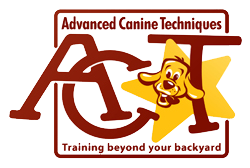Advocating for your dog can mean a variety of things.
- Making sure your dog fully understands the commands you give them before correcting.
- Making sure you introduce training aids slowly and putting them in positions to be successful.
- Making sure you are meeting your dogs’ physical and mental needs (this means good food, structured exercise, training, play and rest).
- Recognizing that your dog is a dog and respecting their needs and genetics.
- And last but not least, being FIRM but FAIR when you communicate with them.
Let’s break these down a bit…
I love the phrase, “practice makes permanent.” I recommend practicing in each room of your house, in the garage, driveway, yard, parking lots, stores, etc. I move to new places slowly and start in the car, then the back of the parking lots, then in the store to a quiet corner. You need to introduce distractions slowly so your dog can get rewarded for focusing on you.
This takes time, patience and repetition.
This also applies to problem behaviors you are experiencing. Separation anxiety, fear of the car, people, other dogs, etc. I first work to keep the dog under threshold. This means finding out where the dog can focus on you around the distraction. It might mean sitting in the car without it turned on or putting a dog in the crate and closing the door and sitting in front of the crate. I need to advocate for my dog and help him stay calm even though he is nervous. Your goal is to help them change their perception about the situation. Again it takes time and patience to be successful.
And give them a minute to follow through with each command you give. Snapping fingers, yelling, sighing loudly, and getting impatient will not help your dog learn those commands any faster. For larger dogs, you need to take a minute for the command to travel from their brain to their back end.
- Many owners use training aids but often struggle doing too much too quickly. You need to help your dog acclimate to any aid and that starts with just putting it on and taking it off. Then you can feed with it on. Then drag a leash with it on. Then pick up the leash and walk around the house. THEN you move outside. The more the dog is comfortable with the aid, the less they will fight. And be open minded to a variety of aids. Maybe one doesn’t work but we have plenty more we can experiment with so dogs and their owners can enjoy activities together.
- Dog’s require physical and mental exercise, but they need both in moderation. Too much physical exercise and you create an adrenaline junkie. Too much mental exercise you have a dog that has too much pent-up adrenaline and no way to release it. I recommend creating a schedule for your dog (puppies as well as adults). Feeding time, potty time, exercise time, play time, training time, rinse and repeat). This will help your dog learn what is required and creates less stress and anxiety.
- Your dog is a dog and they need to be treated as such! Trying to anthropomorphize them is not healthy. They need to run, play, hunt, sleep in crates, and fulfill their genetic needs. Some breeds are meant for working purposes and need to have a job in order to be happy. Some breeds are meant for companion animals. Research the breed and their requirements before you purchase or adopt. Make sure you can fulfill what they need in order to be content.
- I am not sure which trainer said it but communication flows through both ends of the leash. You need your dog to pay attention to you and you need to pay attention to them. As we stated earlier, if we are giving them a command, we need to be firm but fair. I need to make sure my dog knows exactly what I want before I correct them. If I do have to correct, I need to help them follow through and be fair in that correction. You can damage your relationship if you punish too harshly or too often. I often recommend being objective with your dog. You need to find the “just right” mentality when you are working with our dog. But in all aspects of working with your dog, it is 10% the dog and 90% the owner creating that relationship!

